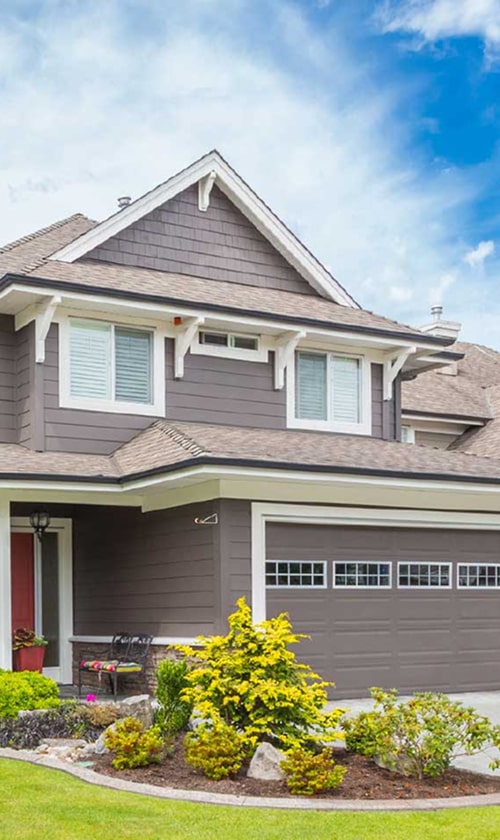Understanding Heat Pump Technology
Heat pump technology uses electricity to move heat from one place to another, giving us both heating and cooling from a single system. We can choose from several types of heat pumps, and the right size and components help these systems work well and save energy.
How Heat Pumps Work
A heat pump moves heat instead of creating it. In winter, the heat pump draws heat from outside air or the ground and brings it inside. In summer, it reverses, pulling heat from the house and sending it outside to cool us down.
Key Steps:
- Evaporator coil absorbs heat.
- Compressor moves the refrigerant.
- Condenser coil releases heat.
- A reversing valve switches modes between heating and cooling.
This process works well even in cold climates with modern cold climate heat pumps. Heat pumps are much more efficient than electric furnaces or baseboard heaters because they transfer heat instead of generating it. They use less electricity and can reduce our energy bills.
Types of Heat Pumps
There are three main types of heat pumps: air-source, geothermal, and mini-split systems.
- Air-source heat pumps take heat from the air outside. They are common in mild to moderate climates, but newer models can work even in colder areas.
- Geothermal heat pumps use the ground’s steady temperature to transfer heat. They need underground pipes but offer very high energy efficiency.
- Mini-split systems (including ductless mini-splits) have one outdoor unit and one or more indoor units. They work well for homes without ductwork or for adding heating and cooling to new spaces.
The best type depends on our local climate, home layout, and if we already have ductwork.
Heat Pump Components and Sizing
A heat pump system has several important parts. The main components are the compressor, outdoor and indoor coils, refrigerant, fans, and the reversing valve. Proper sizing is key. If the system is too small, it won’t heat or cool the house well. If it’s too big, it will waste energy and may not remove humidity properly.
Sizing depends on:
- Home square footage
- Insulation quality
- Window type and placement
- Climate
A sized-for-need heat pump keeps us comfortable and energy-efficient. Professional installers use tools like Manual J calculations to decide on the right system size for our home. We should always check that our new heat pump fits our space and needs.
Energy Efficiency Advantages
Heat pumps deliver high energy efficiency, which can reduce electricity use and lower utility bills. Their design allows us to maintain comfort while using less energy, helping to minimize our carbon footprint.
Energy Savings and Lower Utility Bills
Heat pumps are known for saving energy compared to traditional heating and cooling systems. Many models offer high SEER (Seasonal Energy Efficiency Ratio) and HSPF (Heating Seasonal Performance Factor) ratings. For example, modern units can reach SEER ratings of 15–21 and HSPF ratings of 8–13.
Using a heat pump lets us replace less efficient electric heaters, oil furnaces, or gas boilers. This can decrease our monthly costs by up to 50%, depending on our energy source and local rates.
Lower utility bills come from reduced electricity use and better performance in both heating and cooling seasons. Homeowners notice consistent temperatures inside with less energy wasted.
Factors Impacting Performance
The efficiency of a heat pump depends on several factors. Our home insulation, air sealing, and weatherization directly affect how well heat pumps perform. Homes that keep air in and block drafts let heat pumps run more efficiently.
Local climate plays a big role. In milder regions, heat pumps operate with higher efficiency and need less backup heat. In colder climates, we may need a higher HSPF rating or a cold-climate model for the best results.
The type of heat pump installed matters too. Air-source models are common, but ground-source (geothermal) heat pumps can achieve even higher energy efficiency, though the upfront cost is higher.
Environmental Benefits and Sustainability
Heat pumps lower our environmental impact by reducing carbon emissions tied to energy use. They do not burn fuel on-site, which helps cut our home’s direct carbon footprint. Using electricity from renewable energy sources, such as solar or wind, makes this impact even smaller.
Switching to heat pumps reduces demand for oil, propane, and natural gas. The move supports sustainability and helps slow environmental damage related to fossil fuel use.
Upgrading to energy-efficient heat pumps is part of a broader weatherization strategy. This strengthens resource use, keeps our energy bills manageable, and lessens our reliance on nonrenewable systems.
Cost Savings and Financial Incentives
Heat pumps can help us save money by lowering our energy and maintenance costs over time. There are also incentives and rebates that reduce the price of buying and installing a system.
Installation and Operating Costs
When we buy a heat pump, the upfront cost usually includes the purchase price, professional installation, and sometimes new ductwork. Installation expenses can vary based on the type of heat pump, the size of our home, and how complex the job is. Labor costs and local labor rates are also important factors.
On average, heat pump installation costs between $4,000 and $12,000 for most homes. Although this is often higher than a typical furnace or air conditioner, operating costs for heat pumps are lower. Since heat pumps use electricity to move heat instead of making it, our monthly utility bills tend to drop by 20-40%, depending on our local energy rates.
Regular maintenance helps keep our systems efficient but is usually less expensive than caring for gas or oil-based systems. We also avoid fuel delivery and combustion system checks, which can add up over time.
Rebates, Tax Credits, and Financing Options
We can access several financial incentives to help pay for our heat pump. Federal tax credits can cover up to 30% of the cost of a qualified system, sometimes up to $2,000 or more. Many states and utility companies offer rebates that range from $500 to $5,000.
For example:
| Incentive | Average Amount | Where to Find |
|---|---|---|
| Federal Tax Credit | Up to $2,000 | IRS / Tax Return |
| Utility Rebates | $500 – $5,000 | Local Utility |
| State Incentives | Varies | State Energy Office |
We can also explore financing options such as zero-interest loans, on-bill financing, and special energy programs. These choices help spread the cost over time, making it easier for many households to get started.
Return on Investment and Long-Term Savings
Heat pumps help us save money over time by reducing our energy bills. Even though installation is more expensive at first, lower operating and maintenance costs mean we start saving each month.
Most systems pay for themselves in 6 to 10 years through lower utility bills and fewer repairs. In areas with high energy costs or available rebates, our payback period can be even shorter. After that, the savings add up year after year.
Because heat pumps last between 15 and 20 years, we keep saving for a long time. The value is even greater if energy prices rise in the future, making our total cost savings higher the longer we own the system.
Installation Process and System Optimization
Heat pump installation needs a careful approach to match our home’s needs and the local climate. Key steps include professional assessment, preparing our home’s ductwork and insulation, and choosing the right HVAC contractor.
Professional Assessment and Sizing
A heat pump should be sized to fit our specific home, not just the square footage. HVAC professionals look at our home’s layout, number of windows, and insulation levels these details affect how much heating or cooling is needed.
The local climate zone plays a big role in this choice. In colder areas, the system may need more capacity. HVAC experts often use Manual J load calculations to get this sizing right.
Having the correct system size helps us avoid uneven heating or cooling. Oversized or undersized equipment tends to run inefficiently. We can expect better comfort and energy savings with a well-sized heat pump.
Ductwork, Insulation, and Home Preparation
Our ductwork and insulation need to be in good condition before installing a new system. Proper insulation keeps heated or cooled air where we want it, so the heat pump works less and saves money.
If ducts leak, conditioned air escapes into attics or walls. This means the system runs longer and costs us more. It’s smart to have ducts checked and sealed during installation.
Adding or upgrading insulation in attics and walls can also boost efficiency. Good preparation reduces installation complexity and helps the system reach peak performance. Small gaps, drafts, or missing insulation may lower comfort or cause extra wear on our heating and cooling system.
HVAC Contractor Selection
Choosing a qualified HVAC contractor is one of the most important parts of a successful installation. We should look for contractors with state licenses, insurance, and experience installing heat pumps.
A good contractor will visit our home, answer our questions, and explain which system best fits our needs. They should provide a clear, itemized quote for labor, equipment, and any extra services such as duct sealing or permits.
We can check references, read customer reviews, and compare contractor credentials. Reliable contractors also help us register warranties and apply for rebates, making the process smoother. Proper installation protects our investment and helps us enjoy reliable comfort through every season.
Maintaining Heat Pump Efficiency
Maintaining our heat pump’s efficiency involves routine care, attention to how long our system lasts, and upgrades that help our homes stay comfortable. These steps help us reduce our energy use and save on monthly costs.
Regular Maintenance Requirements
To keep a heat pump running efficiently, we need to focus on regular maintenance. Changing air filters every 1-3 months keeps airflow strong and reduces dust. Dirty filters make the system work harder, which wastes energy and raises our bills.
Annual maintenance from a professional is also important. This service usually includes:
- Checking and cleaning coils
- Inspecting ductwork for leaks
- Verifying refrigerant levels
- Testing the thermostat
These steps lower repair risks and catch small problems early. By keeping up with maintenance, we keep performance high and energy use low. Routine care is necessary for steady performance all year.
Longevity and System Reliability
A well-maintained heat pump can last 12 to 15 years or longer. Taking care of the system helps us avoid breakdowns, which saves money and stress.
Reliable heat pumps mean fewer calls to repair technicians. Problems such as blocked airflow or low refrigerant are less common when we perform regular checks. Energy Star certified systems are built for durability, but only if we keep up with basic care.
Keeping the area around the outdoor unit free from plants, leaves, or snow also matters. Good airflow helps avoid overheating and prevents extra wear on the parts. When we take these steps, we help our heat pump reach its full lifespan.
Smart Home Integration and Upgrades
Smart home upgrades can make our heat pump work more efficiently. Installing a smart thermostat lets us set schedules and adjust the temperature from anywhere. We can see energy use and make changes to save even more.
Smart thermostats often have features like:
- Learning our preferred settings
- Alerting us if the heat pump needs service
- Integrating with other smart devices
We can also choose heat pumps that are compatible with smart home systems, allowing remote monitoring and control. These upgrades let us stay on top of maintenance and comfort, and boost total energy savings each month.




